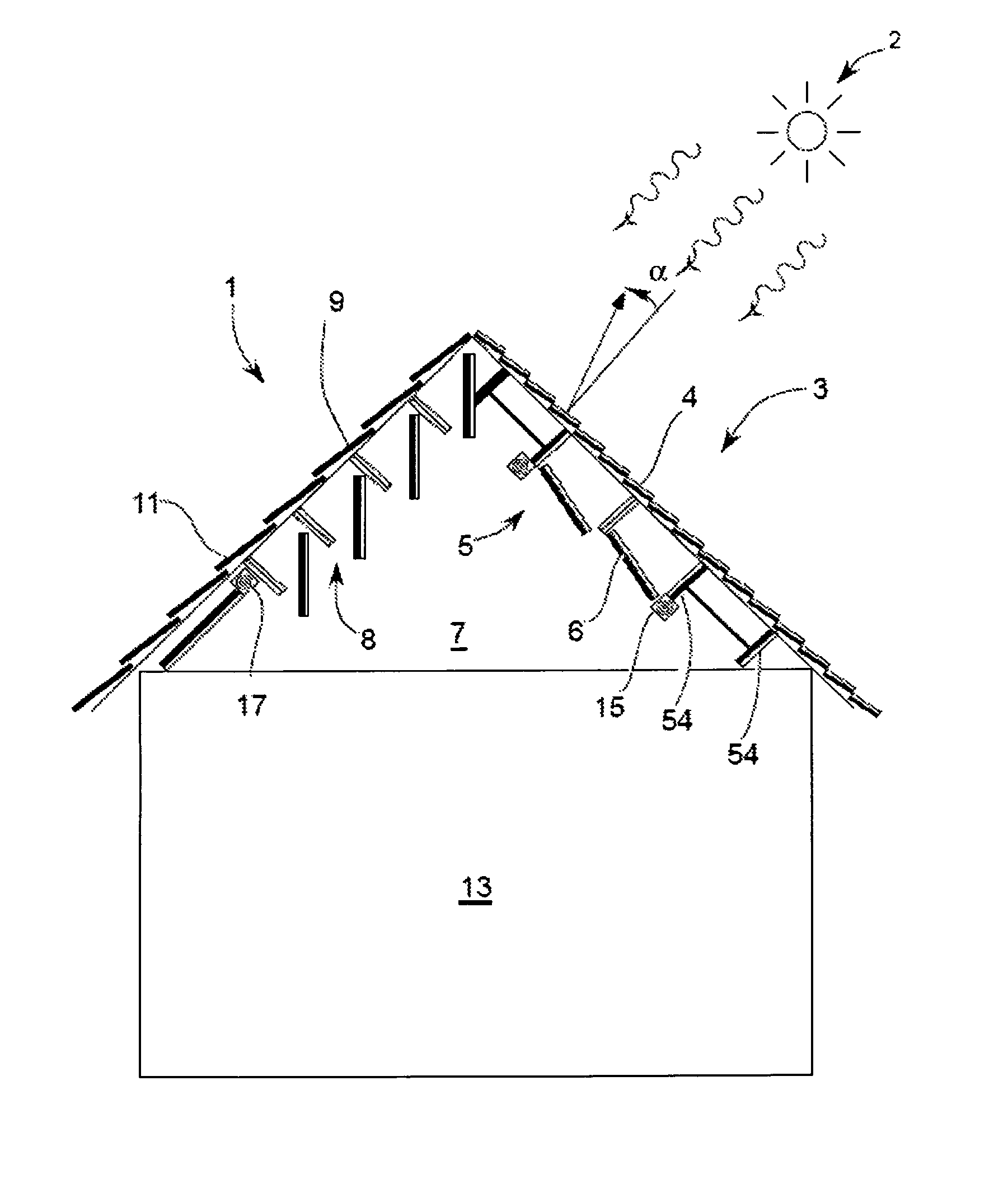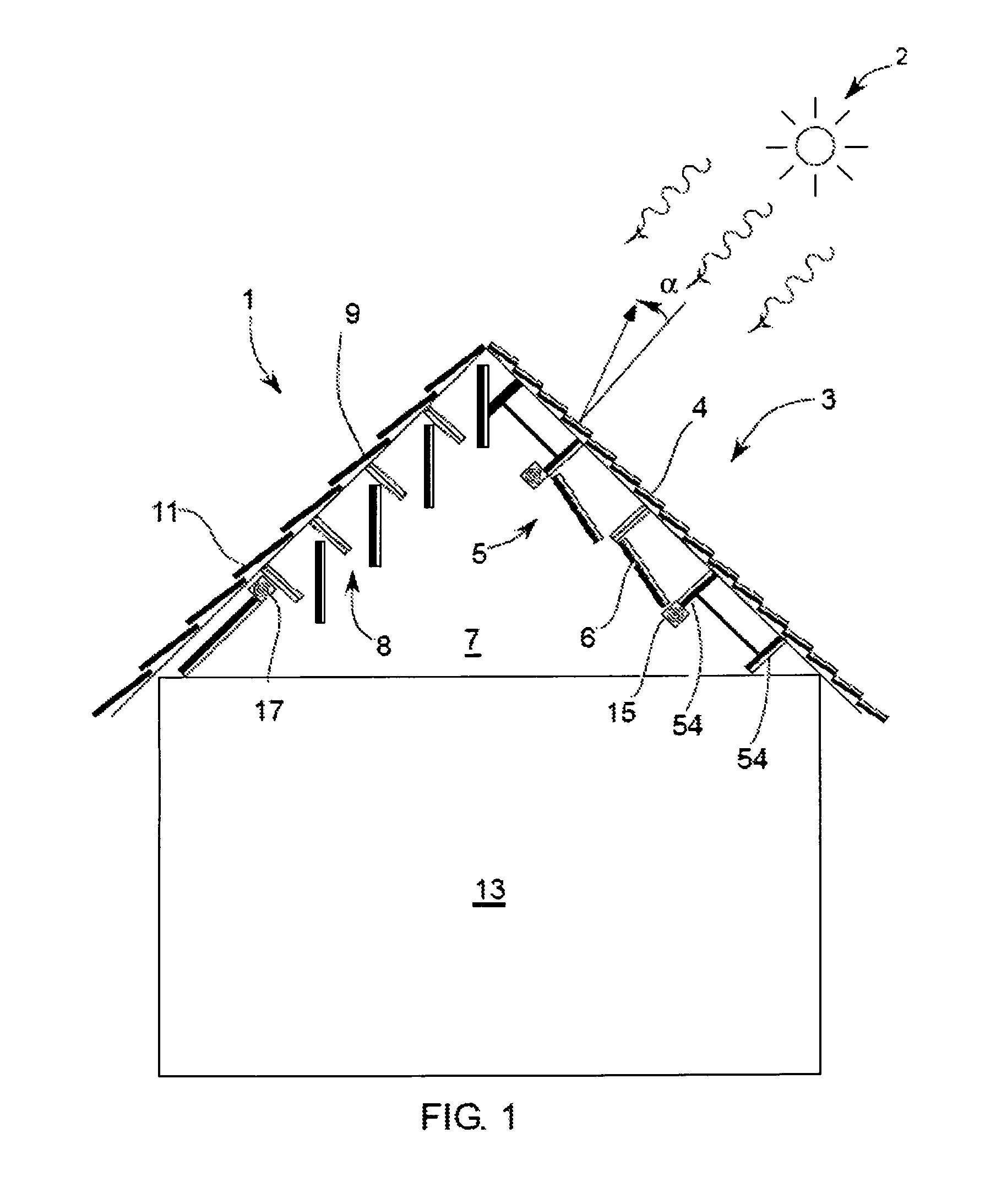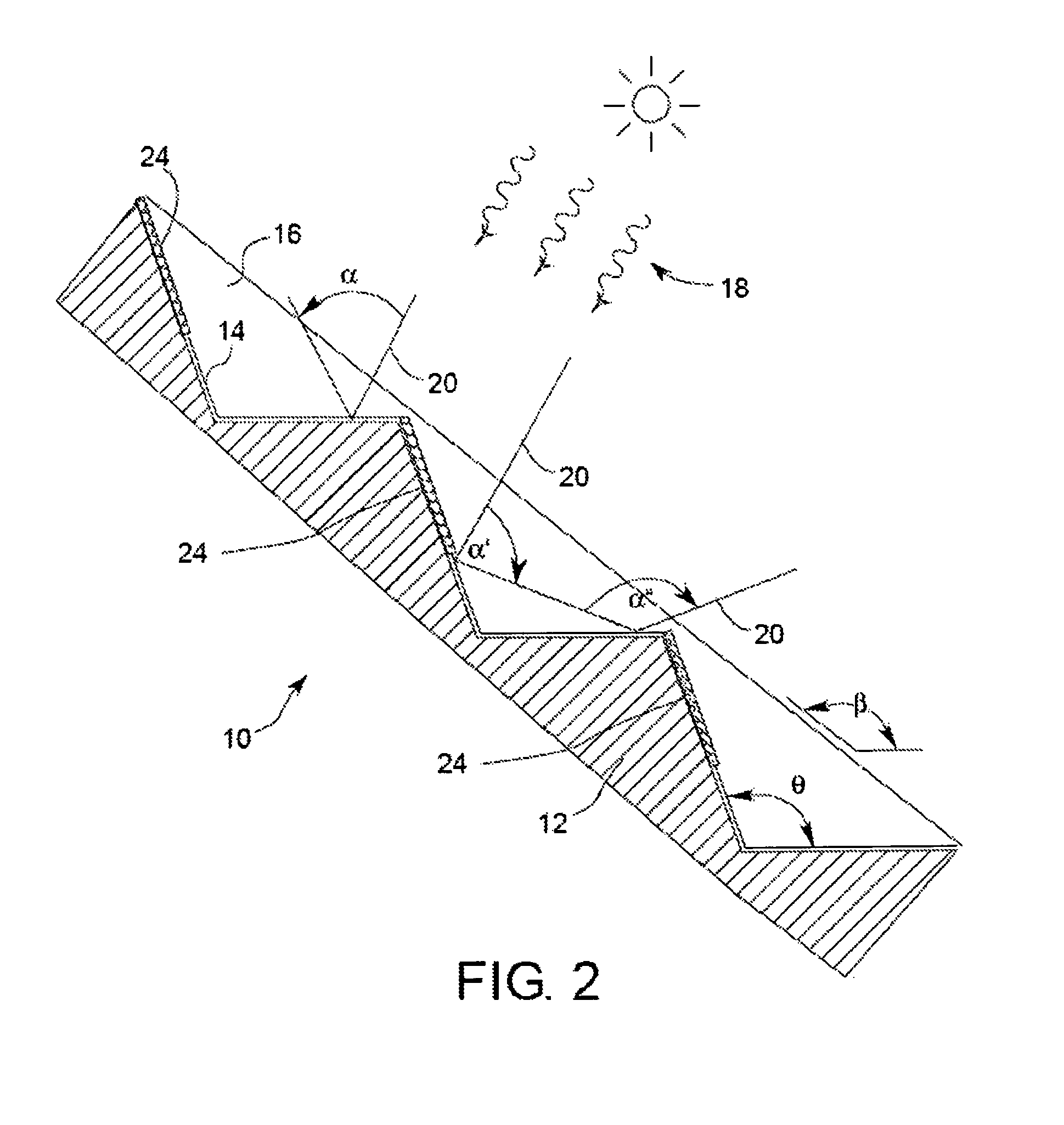Reflective energy management system
a technology of energy management system and reflective material, applied in sustainable buildings, transportation and packaging, light and heating equipment, etc., can solve the problems of limiting heat loss, inefficient radiators of shingles, etc., and achieve the effect of limiting radiant and convective heat gain and facilitating radiant heat loss
- Summary
- Abstract
- Description
- Claims
- Application Information
AI Technical Summary
Benefits of technology
Problems solved by technology
Method used
Image
Examples
Embodiment Construction
[0039]The invention will now be described with reference to the drawing figures, in which like reference numerals refer to like parts throughout.
[0040]FIG. 1 illustrates a building 1 equipped with four adaptive passive solar roof features, in configuration for summer sun 2. First, sunlight reflects from the sunlit portion of the roof 3 due to reflective shingles 4. This reduces radiant heat gain significantly. Second, an adaptive insulating layer 5 is present under the sunlit roof 3. The adaptive insulating layer 5 orients panels, or blinds 6 so that a reflective surface generally faces the roof 4 and seals against fixed supports 54 or adjacent blinds 6 to form a nearly solid barrier, restricting convective heat exchange between the sunlit roof 4 and the attic space 7. In cold weather conditions, adaptive insulating layer 5 is operable to open blinds 6 to permit convective heat exchange between roof 3 and attic space 7. Third, a second adaptive insulating layer 8 is present under th...
PUM
| Property | Measurement | Unit |
|---|---|---|
| temperatures | aaaaa | aaaaa |
| temperatures | aaaaa | aaaaa |
| temperature | aaaaa | aaaaa |
Abstract
Description
Claims
Application Information
 Login to View More
Login to View More - R&D
- Intellectual Property
- Life Sciences
- Materials
- Tech Scout
- Unparalleled Data Quality
- Higher Quality Content
- 60% Fewer Hallucinations
Browse by: Latest US Patents, China's latest patents, Technical Efficacy Thesaurus, Application Domain, Technology Topic, Popular Technical Reports.
© 2025 PatSnap. All rights reserved.Legal|Privacy policy|Modern Slavery Act Transparency Statement|Sitemap|About US| Contact US: help@patsnap.com



